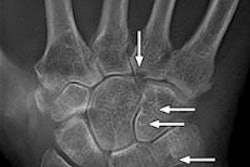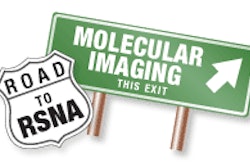The study from the University of Düsseldorf explores whether there is a correlation between increased tracer uptake and the development of bone erosion in combined MPH-SPECT with technetium-99m disphosphonate (Tc-99m DPD) and MRI.
MPH-SPECT and MRI of the metacarpophalangeal joints were prospectively performed in 10 consecutive rheumatoid arthritis patients. The study included eight women and two men, with a mean age of 49 years. Imaging exams were conducted prior to and six months after methotrexate therapy.
A region-of-interest analysis was performed to measure the Tc-99m DPD uptake during both scans, as well as to assess the development of synovitis, bone marrow edema, and erosions.
The researchers, led by Dr. Christian Buchbender from the university's department of diagnostic and interventional radiology, found that the frequency of increased Tc-99m DPD uptake, synovitis, and bone marrow edema decreased after methotrexate therapy, whereas the number of bone erosions increased.
In addition, metacarpophalangeal joints with progressive and newly developed erosions on follow-up had greater Tc-99m DPD uptake at baseline compared with nonerosive joints.
Based on the results, Buchbender and colleagues concluded that a combination of MPH-SPECT and MRI could provide valuable additional information for individual risk-stratified therapeutic decisions.
The knowledge presented in this study, they added, is relevant for the early identification of high-risk extensive joint destruction in rheumatoid arthritis patients who are in need of an early therapy escalation.



















